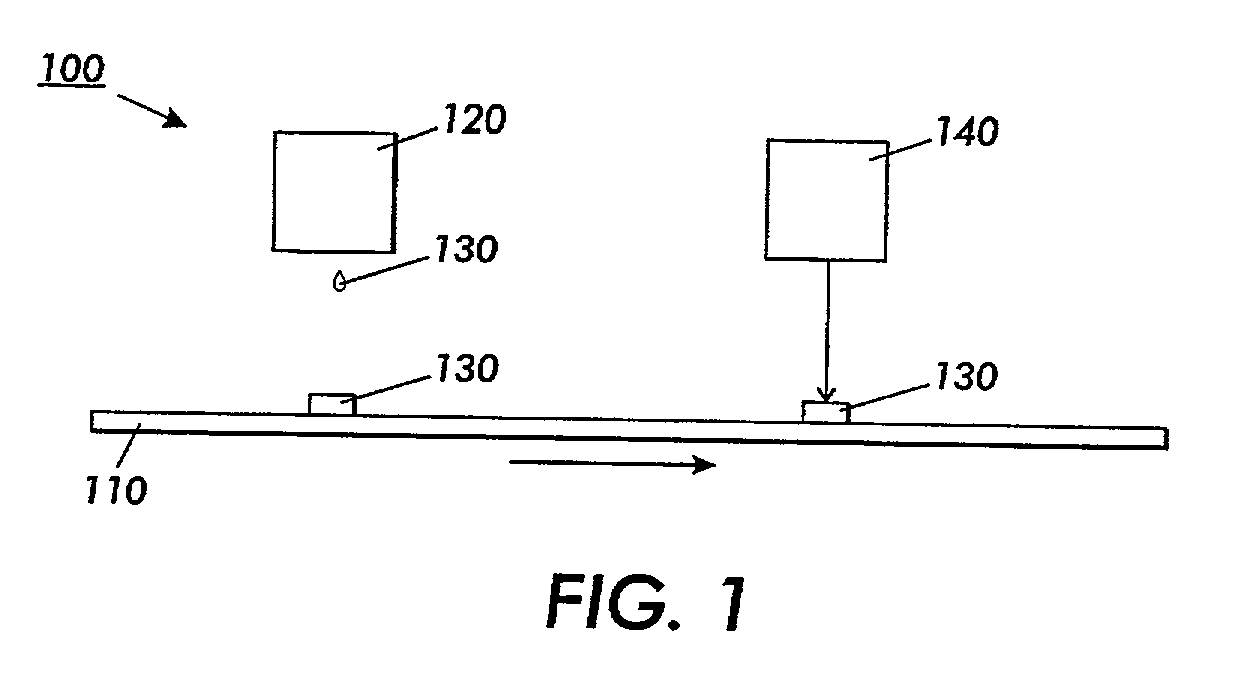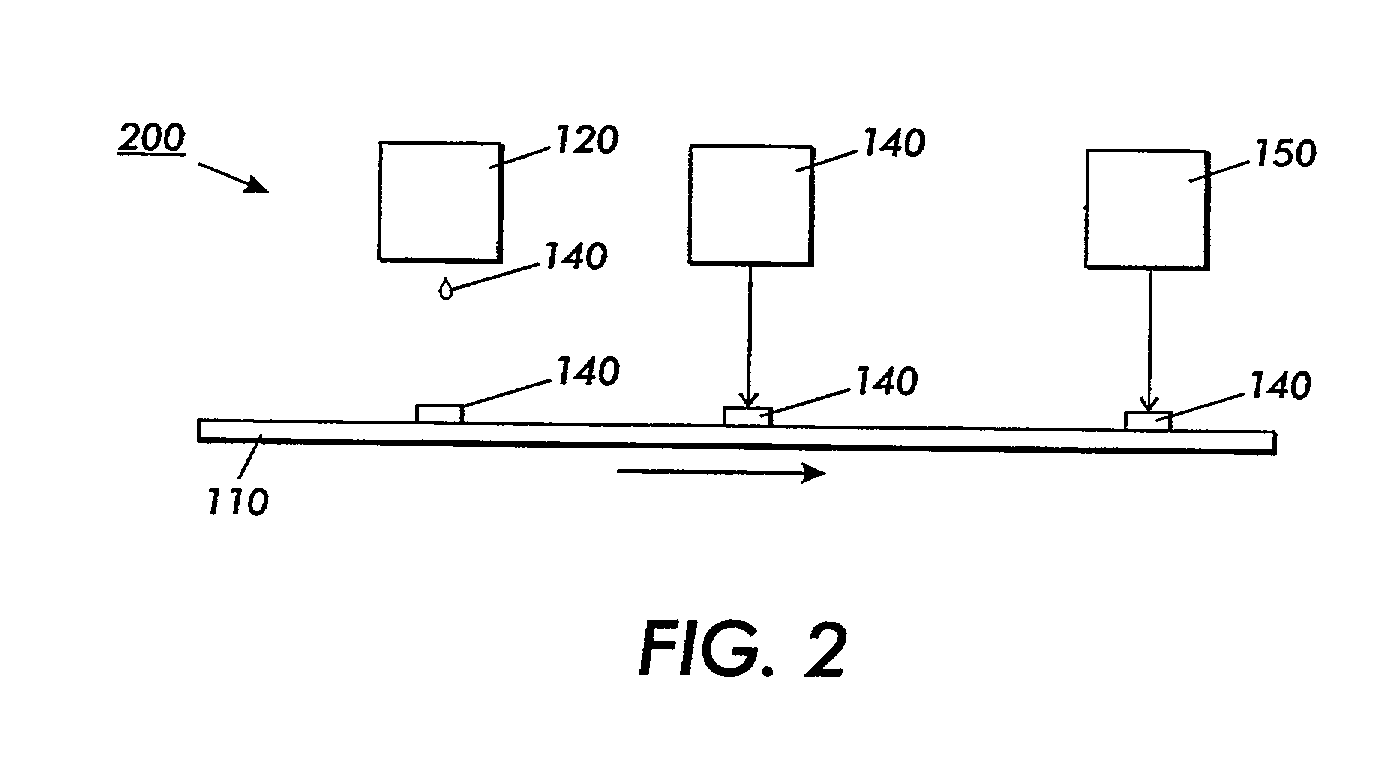Systems and methods of printing with ultra violet photosensitive resin-containing materials using light emitting devices
a technology of light emitting device and ultra violet photosensitive resin, which is applied in the field of systems and methods for printing with substances, can solve the problems of limited number of applications for printing by this method, slow dry time and paper cockling, and the limited number of direct printing printing applications, etc., to achieve high print speed. high, the effect of increasing the number of applications
- Summary
- Abstract
- Description
- Claims
- Application Information
AI Technical Summary
Problems solved by technology
Method used
Image
Examples
Embodiment Construction
[0026] This invention is directed to systems and methods for curing substances that include ultraviolet photosensitive resins. The substances include inks and other fluids that include ultraviolet photosensitive resins. The methods for curing include multiple exposures to ultraviolet light. This invention is further directed to systems that are usable to cure substances that include ultraviolet photosensitive resins.
[0027] In various exemplary embodiments, the methods according to this invention include depositing or ejecting at least one substance that includes an ultraviolet photosensitive resin onto a substrate, partially curing the substance by irradiating the substance using at least one ultraviolet light emitting device, and separately completing the curing of the substance.
[0028] The at least one substance includes an ultraviolet photosensitive resin that polymerizes upon exposure to ultraviolet wavelengths of light. Alternatively, the ultraviolet photosensitive resin can pol...
PUM
 Login to View More
Login to View More Abstract
Description
Claims
Application Information
 Login to View More
Login to View More - R&D
- Intellectual Property
- Life Sciences
- Materials
- Tech Scout
- Unparalleled Data Quality
- Higher Quality Content
- 60% Fewer Hallucinations
Browse by: Latest US Patents, China's latest patents, Technical Efficacy Thesaurus, Application Domain, Technology Topic, Popular Technical Reports.
© 2025 PatSnap. All rights reserved.Legal|Privacy policy|Modern Slavery Act Transparency Statement|Sitemap|About US| Contact US: help@patsnap.com



